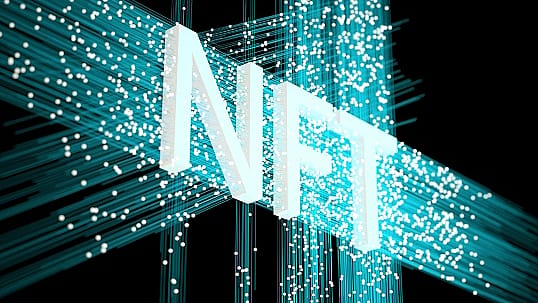Maturing NFT market! A move from digital collectibles to utility
ADVERTISEMENT

Twitter Inc. founder Jack Dorsey's first tweet which was converted to a nonfungible token (NFT) last year and sold for $2.9 million, recently received the embarrassing top bid of less than $14,000. Dorsey's first tweet which reads, "just setting up my twttr," was bought by Sina Estavi, CEO of Malaysia-based blockchain company Bridge Oracle last March. Estavi listed it on an NFT marketplace called OpenSea earlier this month, expecting it to sell for at least $50 million. The NFT market has been there for some years but saw its boom in 2021 and whether such sky-high prices for the unique NFTs are justified or not remains debatable. In the meanwhile, the NFT global sales have plunged 41% after their record highs of $4.64 billion in January this year. Going by the data, the NFT art market seems to be maturing. Every NFT going forward, as per Ramkumar Subramaniam, CEO and founder, GuardianLink, will change into being a utility. GuardianLink is a no-code NFT platform, which enables creators, artists, brands, and celebrities to mould their NFTs with their own launchpads.
People are shifting to NFTs with use cases or for consumption. When Metaverse becomes a reality, explains Subramaniam, the users would want to wear some digital apparel for their virtual official meetings. During that time, some apparel brands would take it very seriously and see it as more than a collectible or promotional activity. They would want to sell their digital clothes which the user could wear and use for some time and go ahead and exchange it for something else as one gets bored or as fashion changes. These kinds of NFTs will be treated more as a commodity. NFT space will switch to being more commercial then. Utility is the future of NFTs.
January 2026
Netflix, which has been in India for a decade, has successfully struck a balance between high-class premium content and pricing that attracts a range of customers. Find out how the U.S. streaming giant evolved in India, plus an exclusive interview with CEO Ted Sarandos. Also read about the Best Investments for 2026, and how rising growth and easing inflation will come in handy for finance minister Nirmala Sitharaman as she prepares Budget 2026.
Currently, uniqueness is a fundamental characteristic of each existing NFT artwork, but going forward, it will move away, says the CEO of GuardianLink. "NFTs will be more of a commodity. What value that NFT brings in, would become very important," says Subramaniam.
Also, the prices of utility NFTs will move down. Initially there will be a lesser number of players hence these players might charge premium prices for the NFTs to cater to high demand. But, as per Subramaniam, as more players enter the space, the competition will rise and prices will reduce.
Indians want NFTs with a purpose
Subramaniam believes NFTs have a great market in our country if they can offer some purpose. For instance, if we're going to spend $10 on something, we would expect to derive a higher value from it, unlike developed nations like the US where people don't mind spending money. The US is more of a collectible market. "Indians prefer a gaming NFT or a music NFT or NFT that one can use to get an access to brands exclusive content or portfolio. That is what will drive big in India," says Ramkumar Subramaniam. It's all about the value for money they get in that and how much they can use it to make things efficient for them," he adds.
